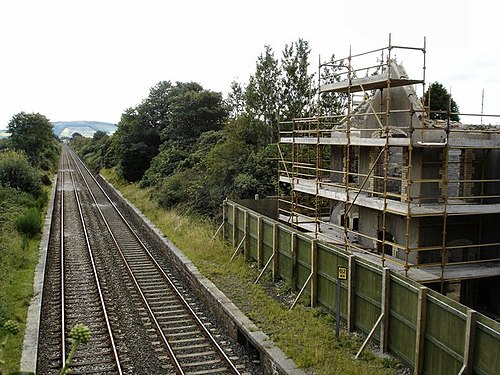This article needs additional citations for verification .(November 2015) |
Adavoyle | |||||
|---|---|---|---|---|---|
 Remains of the station photographed on 24 August 2007 | |||||
| General information | |||||
| Location | Adavoyle, Dromintee, County Armagh, Northern Ireland UK | ||||
| Coordinates | 54°06′25″N6°23′13″W / 54.107°N 6.387°W | ||||
| Platforms | 2 | ||||
| Tracks | 2 | ||||
| History | |||||
| Opened | 1892 | ||||
| Closed | 1933 | ||||
| Original company | Dublin and Belfast Junction Railway | ||||
| Pre-grouping | Northern Railway of Ireland | ||||
| Post-grouping | Great Northern Railway (Ireland) | ||||
| |||||
Adavoyle was a station in the rural townland of Adavoyle, near Dromintee, in County Armagh, Northern Ireland.

